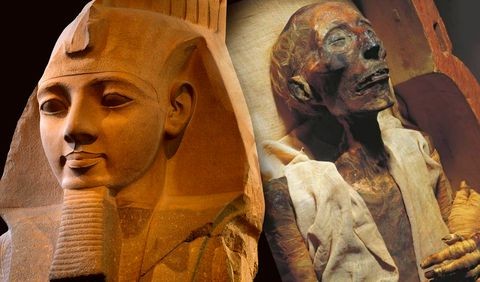Introduction
Ramses II, often hailed as Ramses the Great, reigned for an astonishing 66 years during Egypt’s 19th Dynasty, marking one of the longest and most illustrious reigns in ancient history. Ascending to the throne at a young age, he not only solidified his power but also became a symbol of strength and stability in Egypt during a time when the empire was thriving economically and culturally.
Military Prowess and Strategic Campaigns
As a formidable military strategist, Ramses II led numerous campaigns into Nubia and the Levant, successfully expanding Egypt’s territories and asserting its dominance in the region. His military prowess was prominently displayed during the Battle of Kadesh, one of the largest chariot battles ever fought, where he faced off against the Hittites. The aftermath of this conflict saw Ramses II sign the first recorded peace treaty in history, marking a turning point in international relations and showcasing his diplomatic skills alongside his martial achievements.

Architectural Marvels: Temples at Abu Simbel
Among his most remarkable achievements are the temples at Abu Simbel, masterfully carved into solid rock to honor the gods and immortalize his legacy. These temples, adorned with colossal statues of Ramses himself, served not only as religious sites but also as powerful symbols of his reign, designed to intimidate and inspire awe in both his subjects and potential invaders. The grandeur of these temples reflects the architectural innovation of the New Kingdom and Ramses II’s desire to leave a lasting mark on history.
Cultural Contributions and Building Projects
In addition to his military and architectural feats, Ramses II is remembered for his extensive building projects throughout Egypt. He oversaw the construction of magnificent temples at Karnak and Luxor, contributing significantly to the artistic and architectural developments of the New Kingdom. These structures not only enhanced Egypt’s cultural landscape but also reinforced the pharaoh’s divine status and authority, serving as sites of worship and pilgrimage.
The Discovery of His Mummy
Ramses II’s mummy was discovered in 1881 and is now showcased in the Cairo Museum, offering a fascinating glimpse into the life of this legendary pharaoh, who was revered as a living god during his reign. The discovery of his mummy revealed insights into ancient Egyptian mummification practices, shedding light on the health and lifestyle of one of Egypt’s greatest rulers. This preservation provides valuable information for historians and archaeologists studying the intricacies of ancient Egyptian culture and beliefs.

Conclusion
Ramses II’s extraordinary legacy continues to captivate historians, archaeologists, and visitors alike, embodying the grandeur and complexity of ancient Egyptian civilization. His life and reign not only shaped the course of Egyptian history but also left an indelible mark on the cultural and political landscape of the ancient world. The enduring fascination with Ramses the Great serves as a testament to the timeless allure of ancient Egypt and its remarkable achievements.

